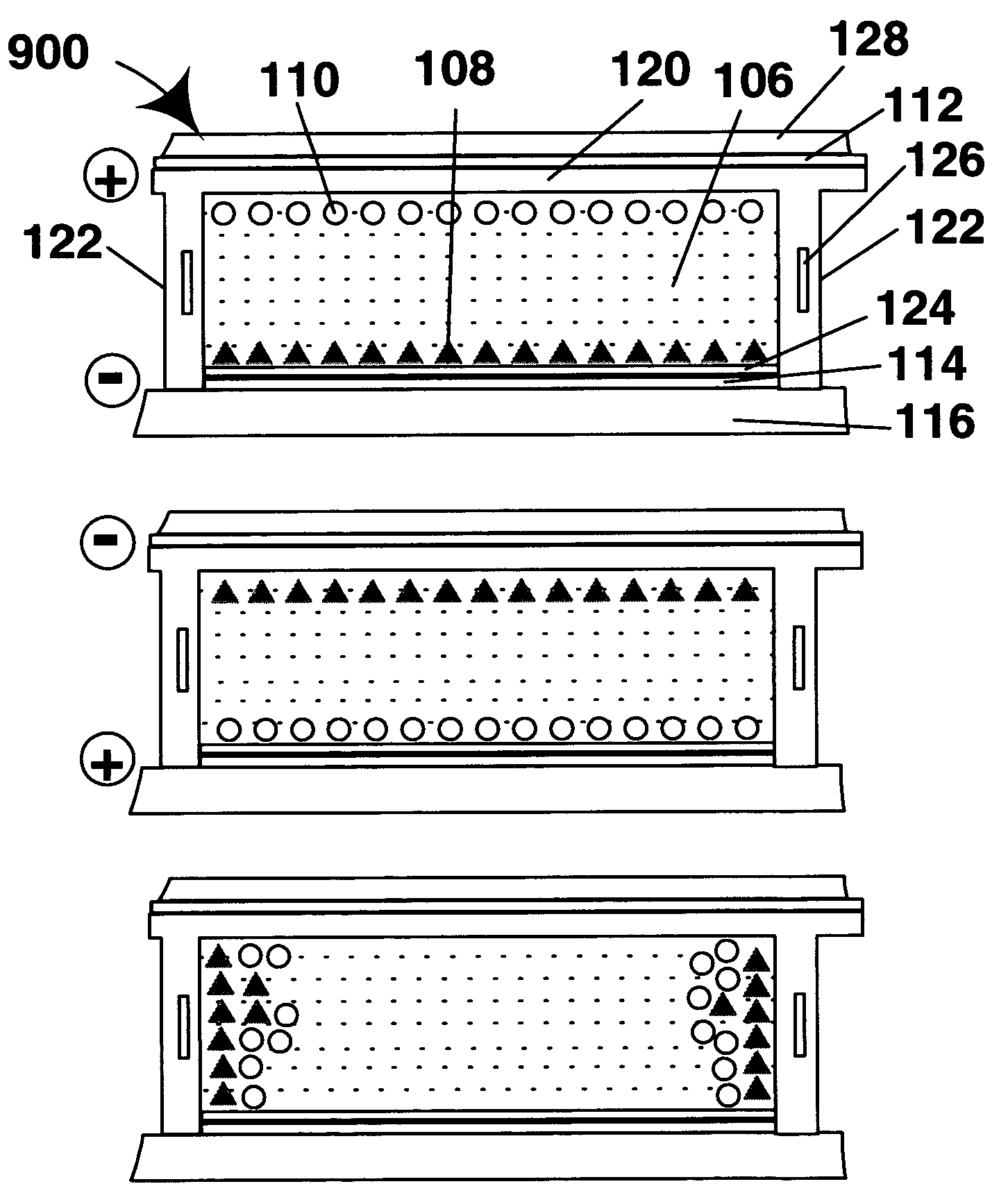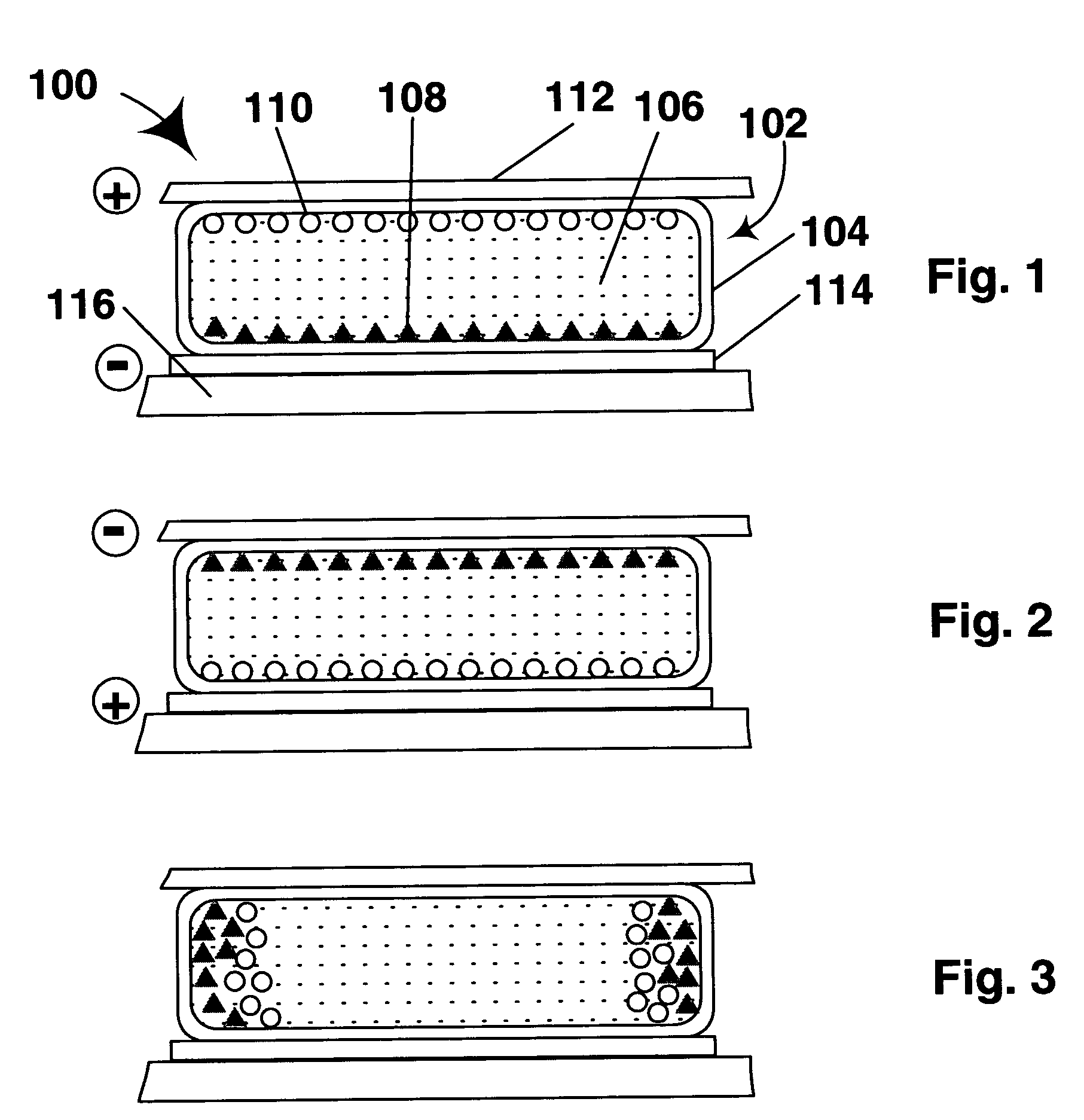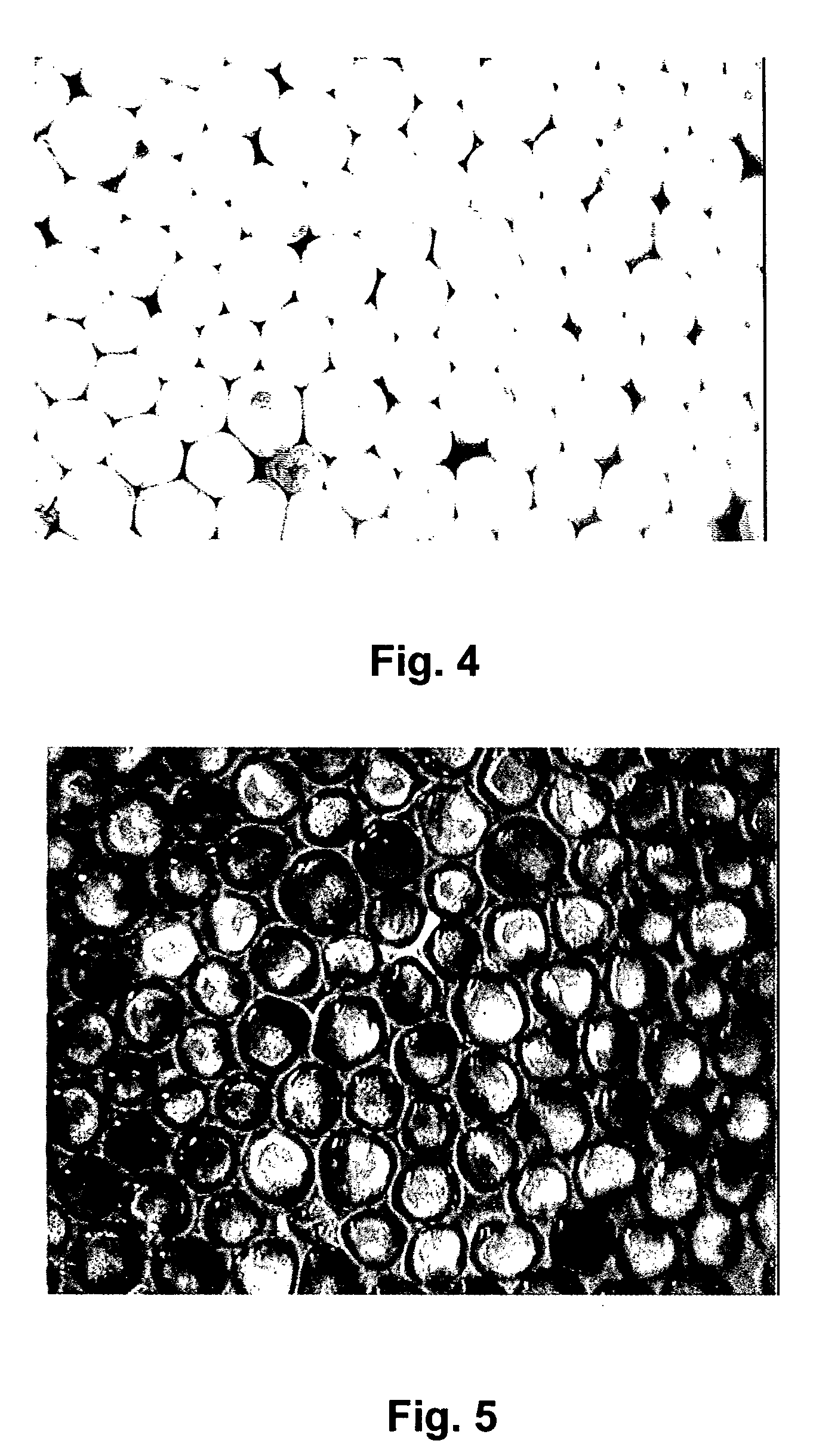Dielectrophoretic displays
a display and dielectrophoretic technology, applied in the field of dielectrophoretic displays, can solve the problems of long image quality, inadequate service life of the display, and limited color range of each pixel of the display
- Summary
- Abstract
- Description
- Claims
- Application Information
AI Technical Summary
Benefits of technology
Problems solved by technology
Method used
Image
Examples
Embodiment Construction
[0036]As already mentioned, this invention provides a dielectrophoretic display comprising a substrate having walls defining at least one cavity, the cavity having a viewing surface and a side wall inclined to the viewing surface; a suspending fluid contained within the cavity; a plurality of at least one type of particle suspended within the suspending fluid; and means for applying to the substrate an electric field effective to cause dielectrophoretic movement of the particles to the side wall of the cavity.
[0037]References to “viewing surface” and “side wall” herein do not imply that these surfaces are perpendicular to each other, though a substantially perpendicular arrangement of the two surfaces is preferred, since when the particles are disposed adjacent the side wall of the cavity, such a perpendicular arrangement minimizes the area of the viewing surface occupied by the particles, and hence permits the maximum amount of light to pass through the cavity. The side wall or wal...
PUM
| Property | Measurement | Unit |
|---|---|---|
| frequency | aaaaa | aaaaa |
| electrophoretic mobility | aaaaa | aaaaa |
| optical characteristic | aaaaa | aaaaa |
Abstract
Description
Claims
Application Information
 Login to View More
Login to View More - R&D
- Intellectual Property
- Life Sciences
- Materials
- Tech Scout
- Unparalleled Data Quality
- Higher Quality Content
- 60% Fewer Hallucinations
Browse by: Latest US Patents, China's latest patents, Technical Efficacy Thesaurus, Application Domain, Technology Topic, Popular Technical Reports.
© 2025 PatSnap. All rights reserved.Legal|Privacy policy|Modern Slavery Act Transparency Statement|Sitemap|About US| Contact US: help@patsnap.com



